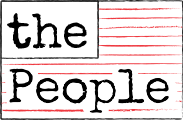Civics U: Practical Economics - What is a Dollar Worth?
There is much attention these days to inflation – that is, to the rising prices of groceries, housing, vehicles, and especially, it seems, to rising gas prices since they affect so many people and are so visible at gas stations. Inflation is also the subject in effect when there is news that the Federal Reserve Board (“the Fed”) might raise interest rates as a means of slowing inflation.
Inflation is only one topic and dynamic of economics, along with matters such as deflation, employment and wages, housing availability and prices, subsidies, and tax levels. Further, economics includes analyses of how these factors intersect and affect one another, and explanations of what causes inflation, recessions, prosperity, wealth and poverty, et al.
These things directly impact people’s lives. Nevertheless, a course in economics is not usually a requirement for high school graduation, nor for most college degrees. Therefore this article will present a few ideas and elements of economics.
Given the current concerns, let us just consider inflation. That it means higher prices is obvious. But what causes inflation? and is it good? and how can it be controlled?
Inflation can happen when there is a shortage of supply of goods, and/or when there is an increased abundance of money. The shortage of supply, often described as scarcity, and the resulting demand for the goods causes goods to be worth more – that is, the consumer must pay, or is willing to pay, an increased price if the consumer has or can obtain the money needed.
Recent scarcities of commodities, ranging from farm tractors to furniture to medical treatment, have been due to interruptions in the supply chain. These have been caused, variously, by reductions in production, holdups in transportation, lack of personnel to deliver services, and diversions of certain goods and services to other areas.
One factor that affects the abundance or availability of money in the economic system is low-interest rates that make it possible for individuals, corporations, and government units to borrow money needed for purchases and projects. Another factor is an increase in the supply of money that results when the government prints more money.
Conversely, if inflation is so rapid that it becomes difficult for the consumer to purchase needed or desired goods, an increase in interest rates can reduce the amount of borrowing, and slow the amount of expenditures, and thus bring an adjustment and lowering of prices – that is, a slowing or reversal of inflation. At times in the past, the federal government or President imposed wage and price controls to directly control or limit inflation.
When it takes more dollars to purchase a commodity than it did previously, it is said that the dollar has lost value. Economists may then speak of the price of money. This can also apply when speaking of the value or price of the dollar compared to other world currencies. It may cost a greater or lesser amount of a foreign currency to purchase a given amount of dollars.
The cost of money – meaning, in this case, the rate of interest paid to borrow money, or paid to investors to obtain money – is an important factor in enabling individuals, enterprises and government entities to finance buildings, start and expand companies, and plan expenditures and investments that make an economy and society strong.
From 1879 to 1933 the value of a dollar was fixed according to a gold standard whereby currency was worth an established price in gold. This is in contrast to the present system of “fiat money” wherein paper money and coins have no fixed value or “price”, but have value only because the government says they have their face value, and are not redeemable in gold and silver. Therefore, when the government prints more money (currency or coins), it is simply worth whatever it can buy – which may increase or decrease.
Thus, the changeable value of the dollar affects the immediate and projected value of a purchase or exchange of income or property, and the relative impact of sales, income, inheritance, capital gains, and other taxes. And government policies and actions in subsidizing businesses, using deficit spending or maintaining budget surpluses, issuing stimulus checks, spending on defense (especially expensive during war time), preventing price-fixing, regulating banks, providing for tax-sheltered investments all have an effect on “the economy.”
The complexity of this can make it difficult for citizens and their representatives to understand government economic policy; regulation of “Wall Street” – i.e., financial markets including such things as the stock exchange, banks, brokerages, bond markets; jobs, unemployment and welfare; and the interrelationship between the government and private sector economic activity. This presents a challenge when it comes to maintaining a role for an informed electorate in judging policy; there is a tendency to leave control of the economy in the hands of financial business professionals.
Yet it remains for the citizens to determine what kind of government, what kind of government activity, what kind of society, and what kind of economy they want and think is best. This calls for economic literacy, and thus for at least basic economic education for all citizens.

